"If destiny's plan is to make us meet our demise in the depths of the ocean, well, at least we'll go broke while swimming with the fishes!"
Happened here...
Does anyone grasp the article title? Nope! Two numbers are concealed within it! If you uncover the logic, you'll discover the answer! Allow me to reveal it at the article's conclusion!
"Water pressure on the submersible was equivalent to weight of Eiffel Tower". - Relatable
Background
What happened to TITANIC on that eve?
The Titanic, a marvel of its time, embarked on its maiden voyage with grandeur and ambition, destined to make history. But fate had a different plan in store, as this majestic vessel collided with an iceberg, shattering illusions of invincibility and plunging into the depths of tragedy. The world was left in awe as more than 1,500 lives were lost, forever etching the Titanic's name into the annals of maritime disasters.
Picture the scene: an opulent British passenger liner, boasting cutting-edge technology and luxurious amenities, setting sail from Southampton, England, on that fateful day of April 10, 1912. The Titanic was a floating marvel, a symbol of human achievement and progress, brimming with dreams and aspirations of its passengers and crew.
Yet, in the vast expanse of the North Atlantic, danger lurked beneath the surface. On April 14, 1912, the Titanic's majestic hull collided with an iceberg, a colossal force of nature that seemed inconsequential against the indomitable vessel. But the ship's strength was no match for the unforgiving ice, and it succumbed to the relentless power of the frozen behemoth.
As the disaster unfolded, panic and despair gripped the hearts of those aboard. The Titanic, once a testament to human ingenuity, now became a scene of chaos and devastation. With lifeboats too scarce to accommodate everyone, a battle for survival ensued, invoking unimaginable acts of heroism and sacrifice.
In the darkness of that ill-fated night, as the icy waters claimed victims one by one, the enormity of the tragedy became apparent. The world watched in horror as the unsinkable ship, a symbol of human arrogance, succumbed to the unforgiving embrace of the ocean depths.
But amidst the darkness, a beacon of hope emerged. The RMS Carpathia, responding to the Titanic's desperate distress calls, raced against time to the scene of devastation. Like a guardian angel, it arrived in the early morning hours of April 15, pulling survivors from the icy clutches of death. The world exhaled a collective sigh of relief, mingled with profound grief for those lost forever to the depths.
In the aftermath of this catastrophe, an outpouring of grief reverberated across nations, uniting humanity in shared sorrow. Inquiries and investigations sought to unravel the truths behind this unimaginable tragedy, leading to significant advancements in maritime safety regulations. Lessons learned from the Titanic's demise paved the way for stricter lifeboat requirements, improved communication systems, and the establishment of the International Ice Patrol to prevent future calamities.
Over a century has passed, yet the story of the Titanic endures, captivating the minds and hearts of generations. It has become a symbol of human fallibility, reminding us of the fragility of our existence and the consequences of our hubris. Books, films, documentaries, and memorials stand as testament to the indelible mark left by the Titanic and the souls it carried on its ill-fated journey.
In the grand tapestry of history, the Titanic's tale will forever stand as a poignant reminder that even the mightiest can be humbled, and that the sea, with all its mysteries and dangers, demands our utmost respect. May the memory of those lost on that tragic night forever guide us toward a future where such catastrophes become mere echoes of a bygone era, etched into the depths of time.
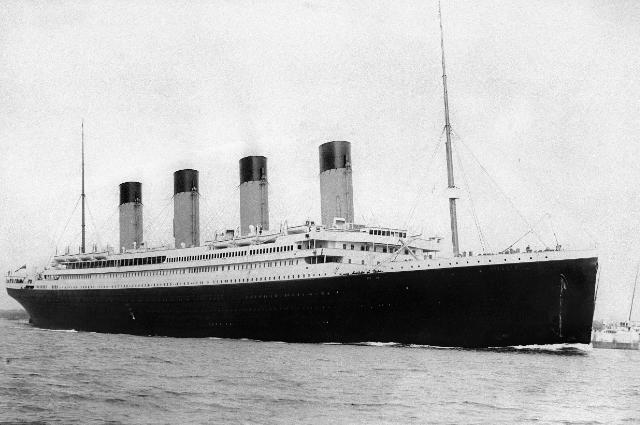
Was that Titanic wreckage discovered?
The discovery of the Titanic wreckage is credited to a joint American-French expedition led by Dr. Robert Ballard and Jean-Louis Michel. In September 1985, equipped with advanced deep-sea exploration technology, the team embarked on a mission to locate the long-lost ship.
Using a remotely operated vehicle (ROV) called "Argo," Dr. Ballard and his team scoured the depths of the North Atlantic Ocean, meticulously searching for any signs of the Titanic's remains. The search was challenging, as the wreckage lay approximately 12,500 feet (3,800 meters) below the surface and covered a vast area.
On September 1, 1985, after days of relentless exploration, the team's efforts were rewarded. The ROV's cameras captured the haunting images of the Titanic's bow resting on the ocean floor. The discovery sent shockwaves through the world, as the sunken behemoth had been lost for over seven decades.
Dr. Ballard's groundbreaking expedition not only revealed the location of the Titanic but also provided invaluable insights into the ship's final resting place and the events leading up to its tragic sinking. The images and data collected during the expedition allowed researchers to gain a deeper understanding of the ship's condition and the impact of the collision with the iceberg.
Since that momentous discovery, subsequent expeditions have been conducted to further explore and document the wreckage. These efforts have provided additional information about the ship's deterioration over time and have helped piece together the puzzle of what happened on that fateful night in 1912.
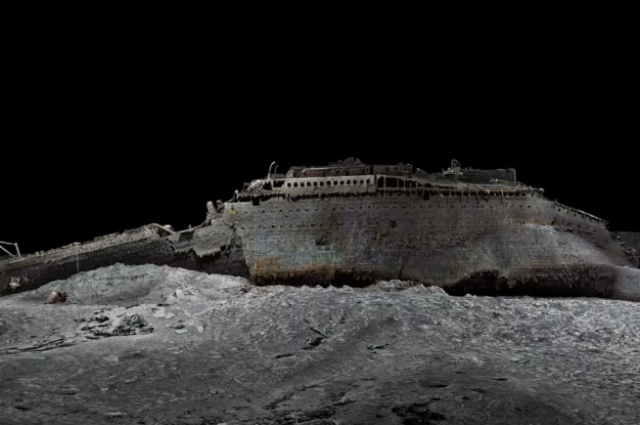
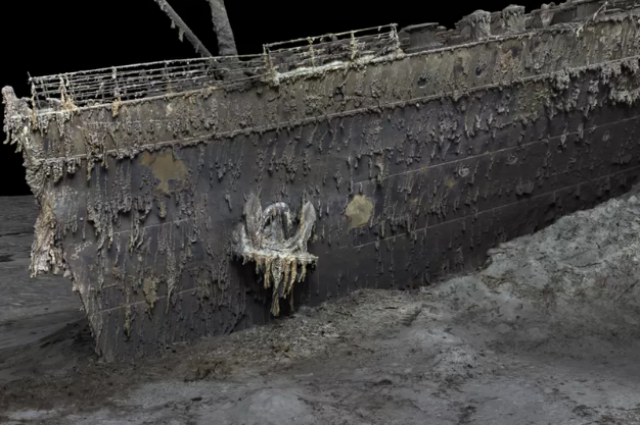
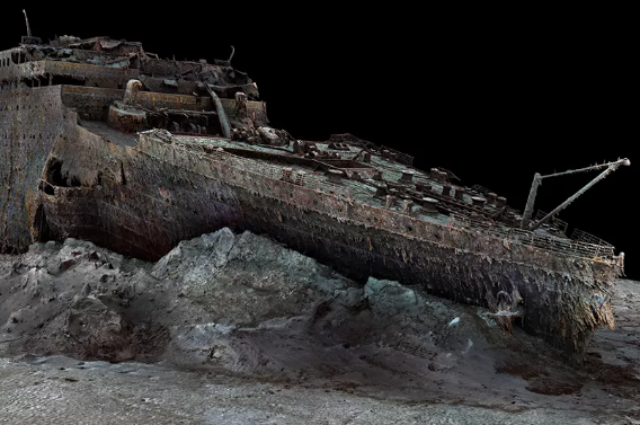
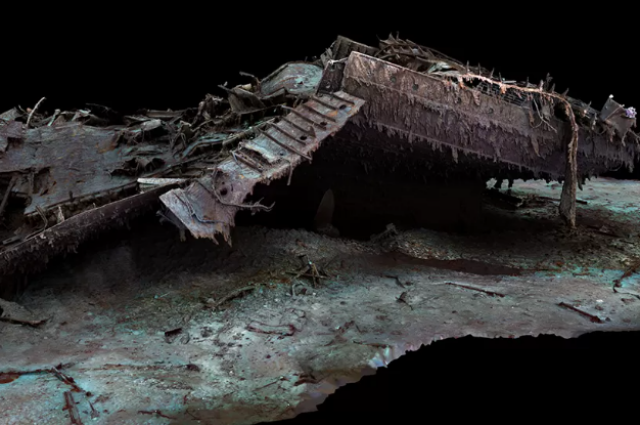
Stockton Rush and the OceanGate
OceanGate Inc. is a privately held company based in Everett, Washington, United States. The company specializes in manned submersible technology and provides deep-sea exploration and research services. At the forefront of their operations is their flagship vessel, the Titan, which stands as a symbol of their commitment to pushing the boundaries of underwater exploration.
The Titan is a state-of-the-art manned submersible that enables scientists, researchers, and explorers to venture into the depths of the ocean with unprecedented capabilities. Designed to withstand the immense pressures of the deep-sea environment, the Titan allows for manned missions to depths of up to 4,000 meters (13,123 feet). Equipped with cutting-edge technology and advanced engineering, this remarkable vessel offers a unique platform for scientific discovery and exploration.
OceanGate Inc., founded by Stockton Rush in 2009, is dedicated to advancing the understanding of the world's oceans through innovative submersible technology. As the CEO of OceanGate, Stockton Rush has been instrumental in leading the company's vision and driving its mission to explore and preserve the mysteries of the deep-sea environment.
Under Rush's leadership, OceanGate has forged partnerships with renowned research institutions, government organizations, and marine scientists to conduct groundbreaking research and exploration missions. The company's efforts have contributed to advancements in marine biology, archaeology, geology, and oceanography, unlocking the secrets hidden beneath the surface of our planet's vast oceans.
OceanGate's commitment to safety, environmental stewardship, and scientific excellence has earned them recognition and respect within the industry. Through their innovative technology and collaborative approach, they continue to play a significant role in expanding our knowledge and understanding of the oceans.
With their remarkable vessel, the Titan, and their visionary leadership, OceanGate Inc. remains at the forefront of deep-sea exploration, pushing boundaries, and inspiring a new era of underwater discovery. Their passion for exploration and dedication to the preservation of our planet's greatest mysteries propel them forward as they chart new territories and unravel the secrets of the deep.
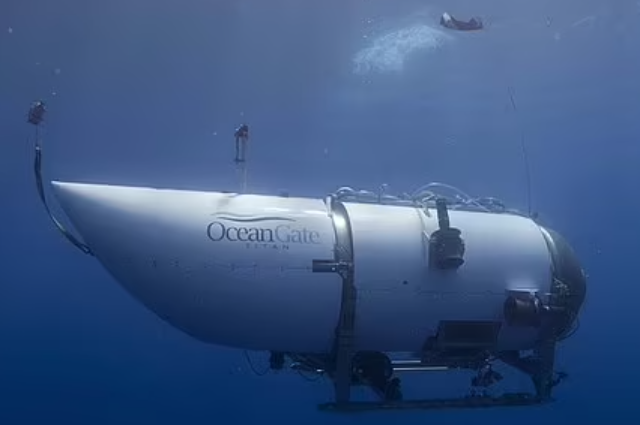
The Wreck of TITAN
TITAN?
- Specification of the Titan
The Titan, a cutting-edge submersible, has a distinctive design made of filament-wound carbon fibre and titanium. The submersible is specifically ballasted at 20,000 pounds (9,072 kilogrammes) in the air to ensure neutral buoyancy once it reaches the bottom. The Titan's passenger hull is made of titanium and carbon fibre, setting it distinct from usual submersibles. The ship is substantially lighter thanks to this novel combination than ones constructed solely of steel or titanium, a strong and lightweight metal. The Titan is similar in size to a minivan and has a small amount of passenger capacity. Interior shots of OceanGate reveal a metal tube-like building with flat floors and curving walls where people may sit.
There is no seating and little headroom, however there is overhead lighting. Because of the little area, standing up straight is difficult. Possibly Also Interests: British businessman involved in the disappearance of a tourist boat worked with the Indian government on a scheme to import cheetahs from Namibia The submersible is secured externally with bolts for security, prohibiting unaided departure even if it resurfaces. The boat has simple comforts like sandwiches, water, and a makeshift lavatory. It is launched from an icebreaker that was rented by OceanGate and formerly controlled by the Canadian Coast Guard. This icebreaker has helped the Titan make several dives by bringing the submarine and a large number of people to the North Atlantic wreck site. The Titan is the largest deep diving submarine, according to OceanGate, and it boasts an unrivalled safety feature that continuously assesses the hull's integrity throughout each dive.
- Proficiency
The Titan is capable of diving to a depth of four kilometres (2.4 miles), according to records provided by OceanGate to a U.S. District Court in Virginia handling Titanic-related proceedings. This information was provided by the corporation in their April filing. The Titan is outfitted with safety features that make it easier for it to ascend to the surface in an emergency. The capability to unleash lead pipes, balloons, and sandbags is among these built-in mechanisms. The design assures that these protections can be engaged even if all people are disabled, emphasising the safety of the submersible. This cutting-edge engineering emphasises the need of readiness and risk mitigation while providing a potential lifeline for the Titan and its occupants under dire circumstances. OceanGate stated in the filing that the Titan has already conducted more than 50 test dives, including dives to depths comparable to those of the Titanic. These test dives were conducted in a pressure chamber and in deep waters close to the Bahamas. On its inaugural dive during the OceanGate expedition in 2022, the submersible ran into a battery problem that necessitated manual attachment to its lifting platform. Submersibles use weights to descend, operating similarly to hot air balloons in terms of functioning.
- Cost
Passengers might anticipate paying up to $250,000 per person for the 10-hour adventure onboard the Titan. Passengers must sign a disclaimer before the trip, which prominently uses the term "death" three times on the first page. The probable dangers connected with the expedition are described in this legal document. The procedure for securely resurfacing the submersible in the event of any unforeseen situations is thoroughly explained to passengers. These briefings make sure that everyone on board is knowledgeable and equipped to handle any situations that may arise throughout the journey.
Who are all travelled?
The five victims within the Titan submarine are listed below by name:
- British businessman Hamish Harding
- Pakistani investor Shahzada Dawood
- Shahzada Dawood son Suleman
- French diver Paul-Henri Nargeolet
- OceanGate CEO Stockton Rush
British entrepreneur and Action Aviation chairman Hamish Harding is renowned for setting aviation-related Guinness World Records. He has achieved world records for the quickest flight around both poles of the planet, the lengthiest time spent at the bottom of the deepest ocean, and the greatest distance travelled. Vice chairman of Engro and Dawood Hercules Corp. Shahzada Dawood having experience in cross-industry mergers and acquisitions. He sat on-boards for the Prince's Trust International and the SETI Institute, among others. Dawood was educated in both law and international textile marketing. Suleman Dawood is a college student majoring in business and the son of Shahzada Dawood. He finished his first year of college at Glasgow's Strathclyde University. Stockton Rush is a British entrepreneur with experience in aerospace engineering. He is the founder and CEO of OceanGate. Rush oversaw the creation of submersibles that could travel 20,000 feet beneath the ocean's surface. He serves in a variety of capacities on boards and development teams in the maritime and aviation sectors. Paul-Henri Nargeolet: Known as "Mr. Titanic," Nargeolet is a renowned authority on the ship and a former captain in the French navy. In 1987, he led the first dive to salvage Titanic wreckage, and throughout his career, he made 37 dives to the ship. Nargeolet oversaw underwater research and artefact retrieval while working with RMS Titanic Inc. and the E/M Group.
Whether it is business, deep-sea exploration, aviation, or Titanic restoration, each of these people contributes a particular set of skills and talents to their respective industries. Their varied backgrounds and accomplishments demonstrate their commitment to and enthusiasm for their own fields.

The Timeline
16th June 2023 Friday
The expedition departs from St. John's, Newfoundland, Canada.
17th June 2023 Saturday
Hamish Harding, a British billionaire and adventurer onboard the submersible, posts on Facebook about the challenging winter in Newfoundland. He mentions that this mission is likely to be the first and only manned mission to the Titanic in 2023. However, a weather window has opened up, and they plan to attempt a dive the following day.
18th June 2023 Sunday
8 am GMT/4 am ET: The submersible was initially scheduled to start its descent, as stated by Harding on Instagram. However, it actually begins its descent later, as reported by the US Coast Guard.
12 pm GMT/8 am ET: The submersible begins its two-hour descent to the Titanic wreck, located nearly 4,000 meters below the surface, according to the US Coast Guard.
1:45 pm GMT/9:45 am ET: Communications between the submersible and the surface vessel are lost approximately one hour and forty-five minutes after starting the descent.
7 pm GMT/3 pm ET: The scheduled time for the Titan submersible to resurface, according to the US Coast Guard. However, it fails to appear.
9:40 pm GMT/5:40 pm ET: The US Coast Guard receives a report about the overdue submersible from the research vessel Polar Prince, which is around 900 nautical miles east of Cape Cod on the US coast.
19th June 2023 Monday
US and Canadian ships and planes gather in the area, with some deploying sonar buoys capable of monitoring depths of almost 4,000 meters. The US Coast Guard requests assistance from commercial vessels.
20th June 2023 Tuesday
2:50 pm GMT/10 am ET: France announces its intention to assist in the search by deploying the ship Atalante, equipped with a deep-sea diving vessel. It is expected to arrive late on Wednesday.
Throughout the day: Canadian Lockheed P-3 Orion aircraft equipped with submarine tracing equipment detect sounds over several hours. CNN and Rolling Stone magazine report the detection of banging sounds at 30-minute intervals.
21st June 2023 Wednesday
The US Coast Guard, US Navy, Canadian Coast Guard, and OceanGate Expeditions establish a unified command to coordinate the search efforts.
6 am GMT/2 am ET: The US Coast Guard confirms that Canadian P-3 aircraft detected underwater noises. They direct remotely operated vehicle (ROV) searches to the area of the sounds and send the data to US Navy experts for analysis.
5 pm GMT/1 pm ET: The US Coast Guard reports the detection of additional underwater noises and an expanded search area, now covering an area twice the size of Connecticut.
Late on Wednesday: More vessels, including a French research ship with a deep-sea diving vessel, are expected to arrive and assist in the ongoing search effort, which now covers an area twice the size of Connecticut.
21st June 2023 Thursday
10 am GMT/6 am ET: The estimated deadline for when the air supply in the submersible is expected to run out, based on the US Coast Guard's estimation of up to 96 hours of air supply from the time of sealing.
Around 12 pm GMT/8 am ET: Two remotely operated vehicles are deployed as part of the search efforts. Experts indicate that it remains uncertain whether the submersible is on the surface or on the seabed, and they warn that locating it may require weeks of intense surveying.
Around 3 pm GMT/11 am ET: A Canadian navy ship carrying a medical team specializing in dive medicine arrives at the scene.
3:48 pm GMT/11:48 am ET: The US Coast Guard announces the discovery of a debris field within the search area. The debris was found near the Titanic wreck by a remotely operated vehicle (ROV).
7 pm GMT/3 pm ET: The US Coast Guard schedules a press conference to provide updates following the discovery of the debris.
8 pm GMT/4 pm ET: The US Coast Guard confirms that a catastrophic implosion occurred, resulting in the death of all five crew members aboard the Titan submersible. The discovery of the tail cone and debris consistent with a pressure chamber loss led to this conclusion. A large debris field containing five major pieces of the vessel is spotted by an ROV scouring the seabed near the Titanic wreck site, approximately 400 miles south of St. John's, Newfoundland. (cdn.jwplayer.com)
What was the issue?
Before announcement:
According to Dr. Nicolai Roterman, a deep-sea ecologist representative from the University of Portsmouth, if an accident of such nature were to happen, the individuals inside the submarine would be killed almost instantly due to the immense pressure. The wreckage of the Titanic, which lies at a depth of 12,500 feet, is well beyond the threshold of water pressure that humans can endure without the protection of a submersible. Experts state that if the hull of the Titanic were breached, the chances of survival would be nearly zero. While certain animals possess extreme adaptations that enable them to survive at great depths, human beings can only go down to approximately 400 feet without the aid of modern technology.
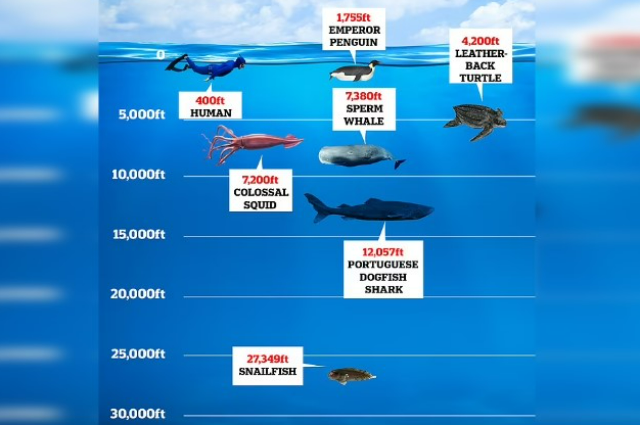
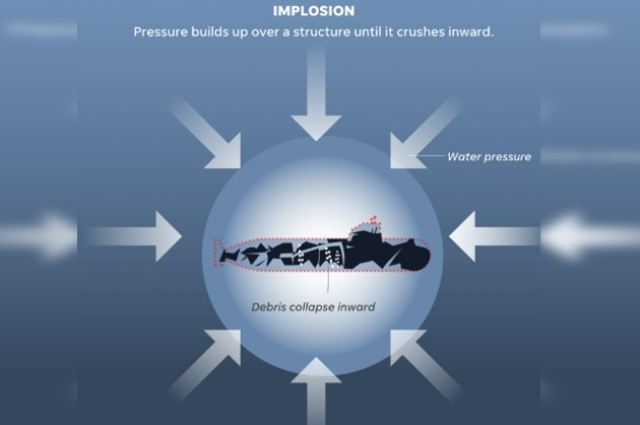
The Titan vessel is expected to have a carbon dioxide scrubber on board to eliminate excessive toxic gas caused by passengers exhaling in the confined space. However, the capacity of this system is typically limited in most crafts. There is also the risk of hypothermia due to the frigid temperatures in the deep ocean, as well as the possibility of hyperventilation induced by panic attacks, which can deplete the available oxygen supply
"If there were any breaches in the hull, the occupants would quickly succumb to the ocean, given the immense pressure of over 5,500 pounds per square inch exerted by the ocean at a depth of 3,800 meters (12,467 feet)," stated Professor Alistair Greig, a marine engineering expert from University College London. He further added that if the hull had been compromised in any way, the outlook would be grim. The Titan submarine disappeared while descending towards the submerged wreck of the Titanic, located 12,500 feet beneath the water's surface.
Even whales, which have evolved to thrive in the deep ocean, only venture to a maximum depth of 10,000 feet. The deep ocean is inhospitable in large part due to the extreme pressure. When standing on the Earth's surface, our bodies are constantly subjected to atmospheric pressure exerted by the surrounding air, which is referred to as one atmosphere, equivalent to roughly 14.7 pounds of pressure per square inch. Upon submerging underwater, individuals have to contend with the denser water surrounding them, leading to an increase in pressure as they descend deeper. This pressure rises at a rate of one atmosphere per 33 feet. At the depth where the Titanic wreckage is found, the pressure would be approximately 380 times greater than what we experience on the surface. The increasing pressure causes any air-filled spaces to collapse under the weight, potentially resulting in breaches for submarines with hull damage and causing severe damage to biological systems like lungs.
Catastrophic implosion
The above video gives the detailed overview of "Catastrophic Implosion"
When a confined space experiences an excessive increase in internal pressure, it results in an outward release of energy similar to an explosion. An analogy can be drawn to blowing up a balloon beyond its capacity, causing it to burst when it can no longer handle the strain.
Conversely, if a container is subjected to external pressure greater than it can withstand, it collapses inward, resulting in an implosion. A popular demonstration conducted by science teachers to illustrate this phenomenon involves heating an empty soda can and then submerging it in a freezing liquid, with the opening facing downwards. The can crumples inward as if it has been crushed.
At the depths where the Titanic lies, the surrounding pressure is approximately 375 times greater than what is experienced on the surface. This immense force applies around 5,500 pounds of pressure per square inch on any exposed surface. Visualizing the magnitude, it can be likened to having the weight of the Eiffel Tower resting on top of the submersible.
How did it happen with Titan?
Concerns were raised in 2018 regarding the design of the Titan submersible, specifically its ability to withstand high pressures. The vessel, developed in collaboration with NASA and the University of Washington, was constructed using carbon fiber and titanium materials. According to Stockton Rush, the creator of the Titan, experts believed it should be capable of handling the pressures at the depths it was intended to reach during the expedition, which were estimated to be around 13,000 feet or 4,000 meters.
However, the submersible never underwent certification from a reputable third-party organization through a conventional assessment process. In 2018, David Lochridge, who served as the director of marine operations at OceanGate Expeditions, issued a critical report about the Titan, suggesting that it required further testing.
Following Lochridge's departure from the company, court proceedings between him and his former employer revealed that the viewport of the Titan was only certified for depths up to 1,300 meters. This depth limitation amounted to less than one-third of what would be necessary to reach the wreckage of the Titanic.
Arron Newman, a shareholder in OceanGate and a four-time passenger on the Titan submersible, defended the vessel during an interview with MSNBC's Ali Velshi. Newman claimed that the Titan was initially a prototype. The expedition to the Titanic wreckage discussed in the passage was the third one, with previous ones taking place in 2021 and 2022.
In 2019, submersible expert Karl Stanley sent an email to Stockton Rush, the creator of the Titan, after he heard cracking sounds during a dive aboard the vessel. As Rush piloted the submersible to a depth of 12,000 feet, the cracking noises intensified with increasing depth.
Multiple investigations have been launched by various authorities to determine the cause of the "catastrophic implosion" of the Titan. Currently, recovery teams are collecting the scattered pieces of the submersible based on mapping data. While criminal inquiries have not been ruled out, it will take some time before all the details surrounding the incident become known.
Conclusion
The tragic story of the Titanic continues to captivate and resonate with people around the world, more than a century after its fateful sinking. The article sheds light on the background of the Titanic's ill-fated maiden voyage, the discovery of its wreckage, and the advancements in deep-sea exploration made by companies like OceanGate Inc. and their flagship vessel, the Titan. The Titan, with its state-of-the-art technology and safety features, allows for manned missions to explore the depths of the ocean and unravel the secrets hidden beneath. However, a recent expedition involving the Titan, carrying notable individuals like British businessman Hamish Harding, Pakistani investor Shahzada Dawood, French diver Paul-Henri Nargeolet, and OceanGate CEO Stockton Rush, encountered unexpected difficulties. The submersible failed to resurface as scheduled, leading to an extensive search and rescue operation involving multiple international organizations. The timeline of events highlights the coordinated efforts made to locate the missing submersible and its occupants. Despite the risks associated with deep-sea exploration, the individuals involved in this expedition exemplify a shared passion for pushing the boundaries of human knowledge and exploration. The outcome of this tragic event remains uncertain, emphasizing the inherent risks and challenges faced in the pursuit of unraveling the mysteries of the deep. The story of the Titanic serves as a poignant reminder of the consequences of human hubris and the fragility of our existence, while also inspiring us to learn from the past and approach the oceans with the utmost respect and caution.
The title is framed with creativity that Titanic disaster happened on 1912 and the recent Titan disaster was happened on 2023, so 2023-1912 = 111, a 111 years destiny.
. . .
References:
- https://www.bbc.com/
- https://www.dailymail.co.uk/
- https://www.independent.co.uk/
- https://en.wikipedia.org/
- https://www.adda247.com/
- https://www.thehindu.com/news
- https://economictimes.indiatimes.com/
- https://www.cbsnews.com/news/
- https://www.nytimes.com/article
- https://www.npr.org/
- https://edition.cnn.com/
- https://nationalpost.com/news/
- https://www.livemint.com/
- https://www.hindustantimes.com/
- https://www.usatoday.com/
- https://www.zeebiz.com/
- https://www.theguardian.com/
